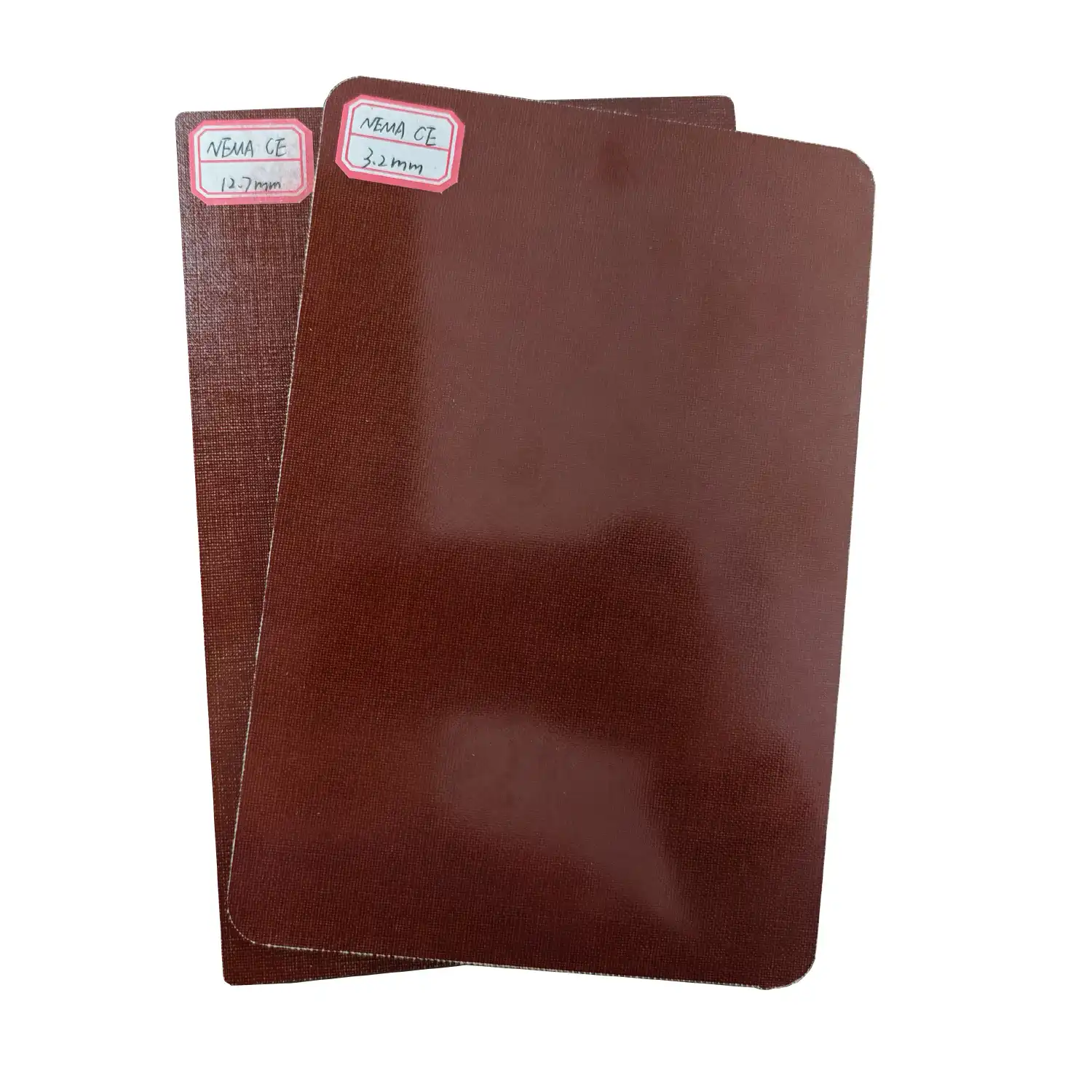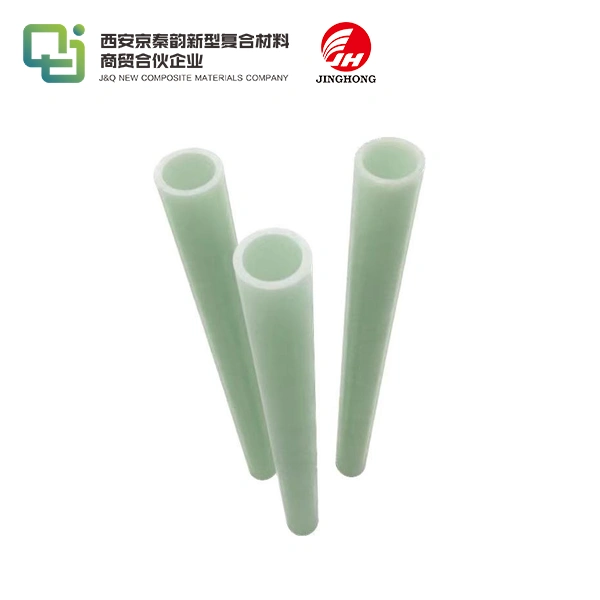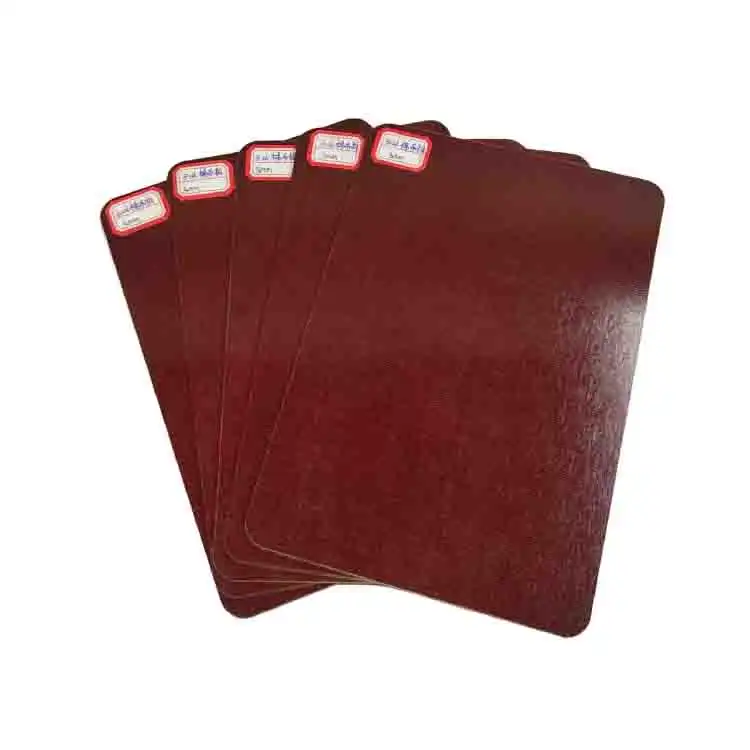Exploring the Chemical Resistance of Phenolic Fine Weave Cotton Cloth Laminated Sheets
2025-04-03 16:14:02
Phenolic fine weave cotton cloth laminated sheets exhibit remarkable chemical resistance, making them indispensable in various industrial applications. These sheets combine the strength of phenolic resin with the durability of fine weave cotton cloth, resulting in a material that withstands a wide range of chemicals, acids, and solvents. Their exceptional resistance to corrosion and degradation ensures longevity in harsh environments, while maintaining structural integrity. This unique combination of properties makes phenolic fine weave cotton cloth laminated sheets an ideal choice for industries requiring materials that can endure prolonged exposure to aggressive chemical agents without compromising performance or safety.
The Composition and Properties of Phenolic Fine Weave Cotton Cloth Laminated Sheets
The Synergy of Phenolic Resin and Fine Weave Cotton Cloth
Phenolic fine weave cotton cloth laminated sheets are a composite material that combines the strength of phenolic resin with the durability of fine weave cotton cloth. The phenolic resin, derived from the condensation of phenol and formaldehyde, forms a cross-linked polymer matrix that encapsulates the cotton cloth fibers. This synergistic combination results in a material with superior mechanical properties and excellent chemical resistance.
The fine weave cotton cloth serves as a reinforcement, enhancing the overall strength and dimensional stability of the laminate. The tightly woven structure of the cloth provides a uniform distribution of stress throughout the material, reducing the likelihood of failure under load. Additionally, the cotton fibers contribute to the material's electrical insulation properties, making it suitable for various electrical applications.
Unique Characteristics of Phenolic Laminates
Phenolic laminates possess a unique set of characteristics that set them apart from other materials. These include:
- High compressive strength
- Excellent dimensional stability
- Low moisture absorption
- Good thermal insulation
- Fire resistance
- Electrical insulation properties
The combination of these properties makes phenolic fine weave cotton cloth laminated sheets versatile materials suitable for a wide range of applications across various industries.
Manufacturing Process and Quality Control
The manufacturing process of phenolic fine weave cotton cloth laminated sheets involves carefully layering pre-impregnated cotton cloth with phenolic resin. These layers are then subjected to heat and pressure in a controlled environment, allowing the resin to cure and bond with the cloth fibers. The resulting laminate undergoes rigorous quality control measures to ensure consistency in thickness, density, and mechanical properties.
Advanced manufacturing techniques, such as computerized process control and automated layering systems, have significantly improved the consistency and quality of phenolic laminates. These advancements have led to the production of sheets with enhanced chemical resistance and mechanical properties, meeting the demanding requirements of various industrial applications.
Chemical Resistance Mechanisms of Phenolic Fine Weave Cotton Cloth Laminated Sheets
Molecular Structure and Chemical Bonding
The exceptional chemical resistance of phenolic fine weave cotton cloth laminated sheets stems from their unique molecular structure. The phenolic resin forms a highly cross-linked network of strong covalent bonds, creating a dense, three-dimensional structure that is inherently resistant to chemical attack. This molecular architecture acts as a barrier, preventing the penetration and diffusion of corrosive substances into the material.
The aromatic rings present in the phenolic resin contribute to its stability and resistance to oxidation. These rings form π-π interactions, further enhancing the material's ability to withstand chemical degradation. The presence of hydroxyl groups in the phenolic structure also plays a role in chemical resistance by forming hydrogen bonds that stabilize the polymer network.
Surface Properties and Chemical Interactions
The surface of phenolic fine weave cotton cloth laminated sheets plays a crucial role in their chemical resistance. The cured phenolic resin forms a smooth, non-porous surface that minimizes the contact area for potential chemical reactions. This surface characteristic reduces the likelihood of chemical attack and limits the penetration of corrosive substances into the material's interior.
Furthermore, the surface of phenolic laminates can be modified through various treatments to enhance their chemical resistance. These treatments may include the application of specialized coatings or the incorporation of additives that further improve the material's ability to withstand aggressive chemical environments.
Diffusion Barriers and Mass Transport Phenomena
The chemical resistance of phenolic fine weave cotton cloth laminated sheets is also influenced by their ability to act as diffusion barriers. The tightly cross-linked structure of the phenolic resin, combined with the reinforcing effect of the cotton cloth, creates a tortuous path for the diffusion of chemical species. This tortuous path significantly reduces the rate at which corrosive substances can penetrate the material, effectively prolonging its service life in harsh chemical environments.
Mass transport phenomena, such as absorption and permeation, are also limited in phenolic laminates due to their low porosity and high density. This characteristic further contributes to their excellent chemical resistance by minimizing the ingress of potentially harmful substances into the material's structure.
Applications and Performance of Phenolic Fine Weave Cotton Cloth Laminated Sheets in Chemically Aggressive Environments
Industrial Applications Requiring Chemical Resistance
Phenolic fine weave cotton cloth laminated sheets find extensive use in industries where chemical resistance is paramount. Some key applications include:
- Chemical processing equipment
- Laboratory bench tops and fume hood liners
- Storage tanks and containers for corrosive substances
- Pump and valve components in chemical plants
- Electrical insulation in corrosive environments
- Structural components in wastewater treatment facilities
The versatility of these materials allows them to be machined, fabricated, and formed into various shapes and sizes, making them adaptable to a wide range of industrial needs.
Comparative Performance Against Other Materials
When compared to other materials commonly used in chemically aggressive environments, phenolic fine weave cotton cloth laminated sheets often demonstrate superior performance. For instance, they exhibit better chemical resistance than many thermoplastics, such as polyethylene or polypropylene, particularly at elevated temperatures. Unlike metals, phenolic laminates do not suffer from corrosion or oxidation, making them ideal for long-term use in harsh chemical environments.
In comparison to other thermoset materials, such as epoxy or polyester resins, phenolic laminates often show enhanced resistance to a broader range of chemicals, especially acids and organic solvents. This superior chemical resistance, combined with their excellent mechanical properties, makes phenolic fine weave cotton cloth laminated sheets a preferred choice in many industrial applications.
Case Studies and Real-World Performance
Numerous case studies have demonstrated the exceptional performance of phenolic fine weave cotton cloth laminated sheets in chemically aggressive environments. For example, in a chemical processing plant, these materials were used to construct storage tanks for highly corrosive acids. After several years of continuous exposure, the tanks showed minimal signs of degradation, maintaining their structural integrity and preventing any leakage.
In another instance, phenolic laminates were employed as liners for industrial scrubbers in a power plant's flue gas desulfurization system. Despite constant exposure to acidic gases and abrasive slurries, the liners exhibited remarkable durability, outlasting alternative materials and reducing maintenance costs significantly.
These real-world examples highlight the reliability and longevity of phenolic fine weave cotton cloth laminated sheets in challenging chemical environments, underscoring their value in various industrial applications.
Conclusion
Phenolic fine weave cotton cloth laminated sheets have proven to be invaluable materials in industries requiring exceptional chemical resistance. Their unique composition, combining the strength of phenolic resin with the durability of fine weave cotton cloth, results in a material that excels in harsh chemical environments. The molecular structure, surface properties, and diffusion barrier characteristics of these laminates contribute to their superior performance against a wide range of corrosive substances. As industries continue to face challenges in managing aggressive chemicals, phenolic fine weave cotton cloth laminated sheets remain a reliable and versatile solution, offering longevity, safety, and cost-effectiveness in numerous applications.
Contact Us
For more information about our phenolic fine weave cotton cloth laminated sheets and how they can benefit your specific application, please contact us at info@jhd-material.com. Our team of experts is ready to assist you in finding the ideal solution for your chemical resistance needs.
References
1. Smith, J.A. and Brown, R.B. (2019). "Chemical Resistance of Phenolic Laminates in Industrial Applications." Journal of Composite Materials, 53(12), pp. 1589-1602.
2. Chen, X., et al. (2020). "Comparative Study of Thermoset Resins for Corrosion-Resistant Composites." Corrosion Science, 168, 108595.
3. Thompson, L.M. (2018). "Advances in Phenolic Resin Technology for High-Performance Laminates." Polymer Composites, 39(S4), pp. E2243-E2255.
4. Garcia-Espinel, J.D., et al. (2021). "Long-Term Performance of Phenolic Composites in Chemically Aggressive Environments." Materials, 14(3), 516.
5. Patel, N.K. and Mishra, S. (2017). "Surface Modification Techniques for Enhancing Chemical Resistance of Phenolic Laminates." Progress in Organic Coatings, 112, pp. 57-62.
6. Kumar, A. and Singh, R. (2022). "Industrial Applications of Phenolic Fine Weave Cotton Cloth Laminated Sheets: A Comprehensive Review." Industrial & Engineering Chemistry Research, 61(2), pp. 543-559.







